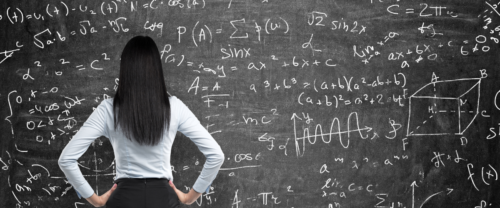It’s nearly universal: Teachers with master’s degrees almost always get paid more than teachers without. The presumption is that the master’s degree signals a greater level of knowledge and skill. But what if I told you that aspiring elementary math teachers who go through graduate-level teacher prep are often less prepared than teachers who go through an undergraduate program?
That’s just one of the big takeaways from the National Council on Teacher Quality’s (NCTQ) new report, Teacher Prep Review: Solving for Math Success. In our analysis of over 1,100 elementary teacher preparation programs across the country, only 2% of graduate programs earned an A or A+, meaning they dedicate sufficient time to preparing teachers on how to teach math and on the essential math content.
The average graduate program dedicates less than one course credit to foundational math content knowledge, reaching barely more than 10% of the minimum recommended by math experts, practitioners in the field, and the research. In fact, because of this paucity of time, more than 8 in 10 graduate programs earned an F in our review.
Undergraduate programs are doing better on average, but many still fail to meet the minimum expectations for math content instruction.
This matters for several reasons. First, poor math teacher prep is hurting prospects for students. Research shows that elementary students with higher math scores tend to earn higher salaries as adults. Early math skills predict success in other subjects, like reading and science. And math knowledge builds over time, so students who fall behind early may never catch up.
Preparation also matters for teachers. Not only are graduate-level candidates paying more money to get less prepared, but ill-prepared elementary math teachers are more likely to struggle and exit the profession after a short time—leaving their students and colleagues to scramble.
Adding insult to injury, large urban districts pay well-experienced teachers with master’s degrees over $8,200 (11%) more on average—and some as much as $54,000 more—than teachers with only a bachelor’s degree, despite the paltry training in mathematics content provided by graduate teacher prep programs.1 Sadly, teachers and districts are not getting what they pay for.
What is a graduate program to do?
- Make the time: Dedicate at least 150 instructional hours—10 course credits—to mathematics content and pedagogy, with at least 105 hours dedicated to math content.
- Give a content knowledge diagnostic: If the program cannot reach the 105 content hours target, then use a content knowledge test as a condition of admission to the program—not as criteria for rejecting candidates, but as a way to diagnose where candidates need additional support and coursework to fill in knowledge gaps. And then fill those gaps.
- Learn from peers: Follow the example of the Phyllis J. Washington College of Education at the University of Montana: All teacher candidates, in bothregardless of undergrad andor graduate elementary prep programs, must complete three math content courses designed specifically for aspiring teachers as conditions of their admission into the undergraduate and graduate elementary prep programs. For more insight into what they did, read the story here.
Graduate programs are shirking their responsibility to prepare aspiring math teachers—even on the same campuses where undergraduate candidates spend more than five times more course time on math content. Regardless of whether aspiring teachers complete an undergraduate or graduate program, they will receive the same license and do the same job in schools. Even more alarming is the fact that new teachers are very often assigned to teach the students who need the most support.
The findings from NCTQ’s Teacher Prep Review: Solving for Math Success highlight a critical gap in graduate teacher preparation: a dangerous deficiency in mathematics content instruction—and for districts, a costly expense not connected to improving student outcomes. To ensure all elementary teachers—regardless of preparation pathway—are equipped for success, graduate programs must restructure coursework, prioritize math content, and assess candidates’ knowledge. The stakes are too high to continue producing and paying extra for underprepared educators, especially for students who most need high-quality math instruction.
More like this

Dim signals: When licensure tests can’t tell us if teachers are ready to teach math

State of the States: Five Policy Levers to Improve Math Instruction

Professional development that delivers: discovering the keys to better math and science outcomes
Endnotes
- Salary data is current as of the 2022–23 academic year and comes from NCTQ’s Teacher Contract Database, which consists of data from 148 school districts in the United States: the 100 largest districts in the country, the largest district in each state, and the member districts of the Council of Great City Schools.


